Behold the missing link between Martha Stewart and Moby Dick: the scrimshaw pie multi-tool.
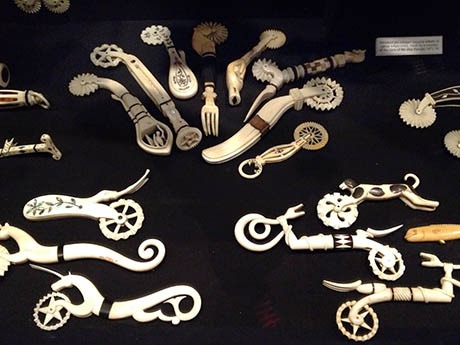
IMAGE: Scrimshaw pie-crimping multi-tools from the collection of the New Bedford Whaling Museum; photograph by Nicola Twilley.
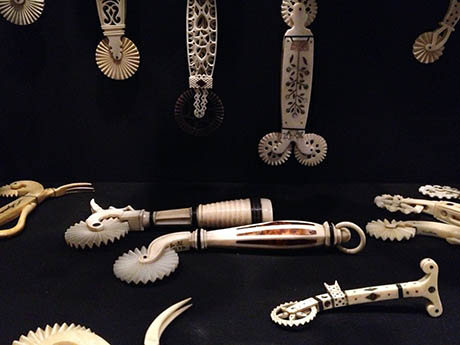
IMAGE: Scrimshaw pie-crimping multi-tools from the collection of the New Bedford Whaling Museum; photograph by Nicola Twilley.
On a recent Venue visit to the New Bedford Whaling Museum, I was captivated by a gallery filled with scrimshaw items, carved by American nineteenth-century whalemen as gifts for mothers, wives, and sweethearts during their long sea voyages. Alongside busks (a rigid insert that kept the corsets straight and upright) and swifts (used to hold hanks of yarn during winding), scrimshanders carved baleen, walrus tusks, and whale teeth into hundreds of thousands of pie crimpers.
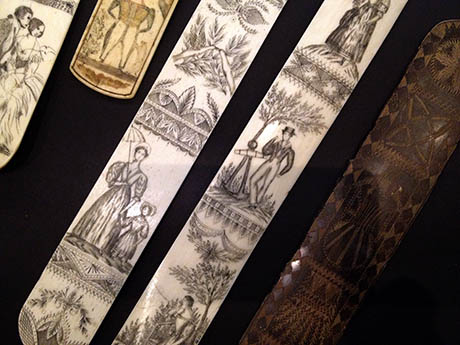
IMAGE: Scrimshaw corset busks from the collection of the New Bedford Whaling Museum; photograph by Nicola Twilley.
Serious pastry chefs today still crimp the edges of their pies using their fingers. Some might go as far as using a fork or spoon to create decorative patterns; and the truly gadget-obsessed, or those with no limitations on their kitchen storage space, might even own a simple stainless steel crimping wheel.
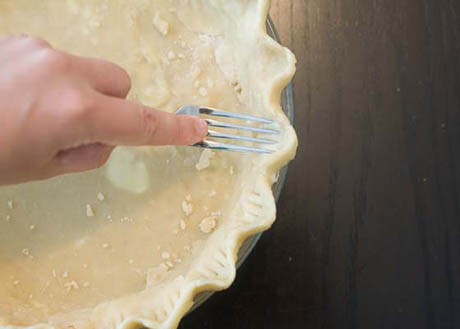
IMAGE: Using a fork to crimp a pie edge; photograph by Lauren Weisenthal for Serious Eats.
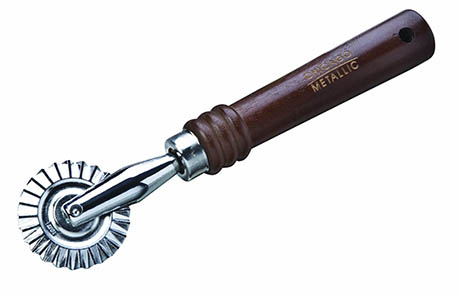
IMAGE: A contemporary pie crimper from the Chicago Metallic “Baking Essentials” range.
Nineteenth-century scrimshaw pie crimpers, however, are not just useful for sealing pies with an attractive flourish. They incorporate forks for punching air holes, knives for cutting off excess pastry, tart tampers that double as decorative stamps, and, most importantly, two, three, or even four crimping wheels, each of which would imprint a different pattern on your pie crust.
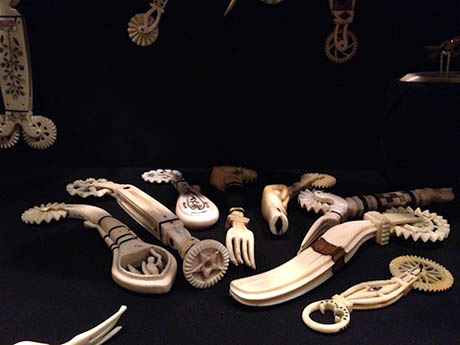
IMAGE: Scrimshaw pie-crimping multi-tools from the collection of the New Bedford Whaling Museum; photograph by Nicola Twilley.
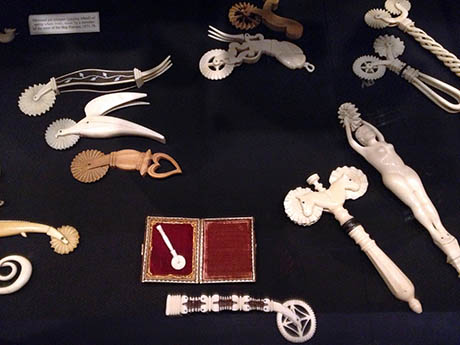
IMAGE: Scrimshaw pie-crimping multi-tools, including one for very tiny pies, from the collection of the New Bedford Whaling Museum; photograph by Nicola Twilley.
The exhibit attributes this functional extravagance to many hours of boredom at sea, but also to the American diet in the nineteenth century. A typical New England meal of the era would involve not just pie, but pies, in both savoury and sweet form. Armed with a crimping multi-tool, a lucky whaler’s spouse or mother need never fear a moment’s confusion differentiating between her cherry and chicken pies.

